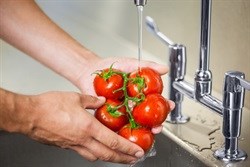
The way groceries are transported, stored and consumed has an effect on the safety of the food you eat every day and this is often neglected.
Poor food handling practices during preparation and storage can cause food to become less nutritious or contaminated, posing a health risk. This is particularly true when preparing and storing foods for lunchboxes that are carried out of the home to work or school each day.
During preparation:
During the day:
Leftover tips
Leftovers can make for a convenient lunch the day after cooking, but remember these additional tips when handling leftovers:
Useful knowledge